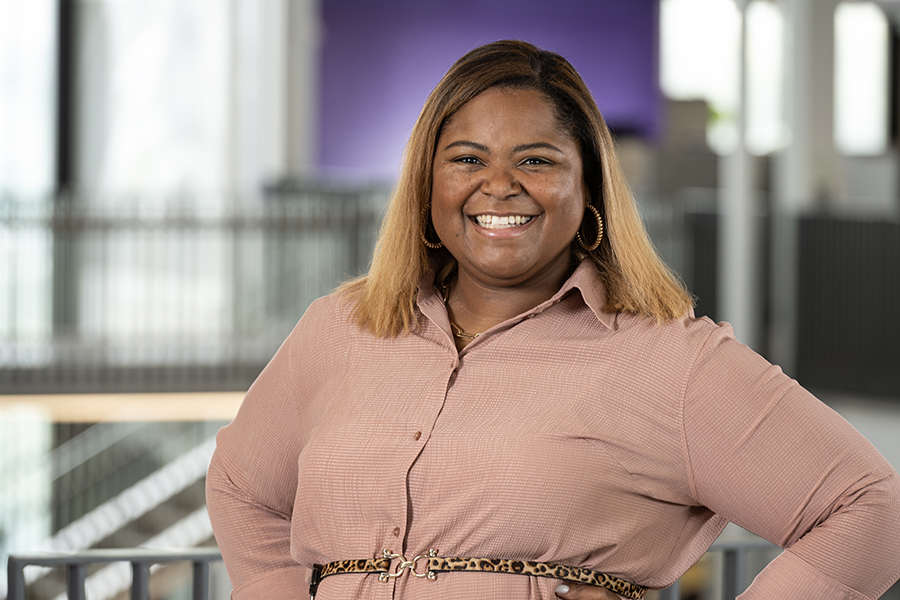Guest opinion: How to create intentional workplace DEI initiatives

BY NOLA CARTMILL
As diversity, equity and inclusion (DEI) initiatives have gained traction over the past decade, they have also faced significant pushback, particularly in today’s polarized climate. Many organizations have shifted their focus away from diversity and equity in favor of a more neutral term: inclusion. For some, this pivot seeks to avoid the divisive nature of “diversity” and “equity,” while others question whether focusing solely on inclusion can address the deeper structural challenges that DEI programs aim to confront.
Despite these challenges, inclusion, in all its forms, is a necessary component of a healthy, sustainable workplace. However, as organizations navigate this shift, the question remains: What does “inclusion” truly mean in a modern business context? How can organizations create a truly inclusive environment from a policy standpoint?
The rise of Generation Z and their expectations
A key factor behind the current DEI conversation is the entrance of Generation Z (Gen Z) into the workforce. Born between 1997 and 2012, this generation has grown increasingly more socially aware. They are vocal about their desire to work for companies that align with their values. An organization’s commitment to diversity and inclusion tends to be a non-negotiable for Gen Z.
Businesses not only need to understand what inclusion means but, on top of that, need to implement policies that reflect it. While we may have a basic understanding of inclusion — valuing, respecting and supporting individuals — creating an environment where people feel welcomed, heard and able to contribute fully requires a deeper, more intentional approach.
A shift from passive to active
Creating an environment where individuals feel empowered to be their authentic selves is crucial. Inclusion is not just about having a seat at the table; it is about being given the space to shape the conversation and the environment. True inclusion means creating a culture where all employees, regardless of their background, feel they have the power to influence change and make meaningful contributions.
Practical steps toward intentional inclusion
The following principles are key factors in building a more inclusive environment, especially as companies recruit and retain younger, more diverse talent. These principles help ensure that inclusion is not just a corporate buzzword but a tangible, actionable part of the workplace culture.
Consciousness
The first step toward intentional inclusion is becoming conscious of the differences within your organization. Acknowledging that diversity — whether based on race, gender, socioeconomic status or other factors — can add value to your team. Leaders of organizations need to engage in self-reflection. This could help them understand their own bias and its influence on their decision-making and interpersonal relationships.
Creating awareness and providing actionable steps to combat unconscious bias through training, inclusive recruitment practices and mindful communication helps create a more equitable environment for everyone.
Curiosity
The foundation of understanding and appreciating different perspectives is curiosity. A culture around curiosity encourages employees to ask questions without a feeling of judgment. Employees should be encouraged to inquire about their colleague’s backgrounds, challenges and ideas. Questions could look like “Who’s at the table?” and “Who’s not at the table, and why?” This pushes organizations to evaluate whether diverse voices are genuinely being included, or if certain individuals are being sidelined unintentionally.
This mindset also includes understanding whether employees have been given the proper resources and tools to succeed. For instance, whether they have been properly onboarded, mentored and supported in their roles. It is about ensuring that everyone has not just a seat, but a voice.
Cultural humility
Cultural humility is a critical component of intentional inclusion. This requires recognizing that everyone is an expert on their own life experience, but that we are only experts in our world. This mindset prevents leaders and colleagues from making assumptions about others based on stereotypes or limited understanding. Cultivating cultural humility is an ongoing process that means embracing the idea of learning about other cultures and identities. It requires a willingness to listen and adapt, rather than impose preconceived notions.
Compassion
Another important factor is compassion. In the context of the workplace, this means creating space for employees to share their personal experiences and challenges without fear of judgment. Compassion involves listening, providing support, and making sure that all employees feel heard and understood. By creating a compassionate environment, organizations can ensure that people feel emotionally and mentally safe, which is critical for fostering a sense of belonging.
Courage
Finally, intentional inclusion requires courage. Organizational leaders and employees alike must be willing to have difficult conversations and take actions that may make them uncomfortable. This might involve confronting uncomfortable truths about bias, privilege or inequality within the workplace. It may also require making difficult decisions that challenge the status quo, such as reevaluating hiring practices, revising performance metrics or addressing power imbalances within the organization. Within the workplace, courage is about standing up for what is right, even when it is difficult or unpopular.
As we go toward the future of work, organizations must recognize that inclusion cannot be overlooked. It requires intentional, deliberate action to ensure that all individuals feel respected, valued and supported. The principles that drive intentional inclusion — from consciousness and curiosity to compassion and courage — will help create an environment where every employee can thrive, contribute and make a meaningful impact.
Creating an inclusive workplace is an organizational necessity. By embracing the principles of intentional inclusion, organizations can build stronger, more innovative teams that reflect the diverse world we live in while attracting and retaining top talent from all backgrounds. In the end, true inclusion means not only welcoming people into the room but making sure they have a seat at the table and the ability to rearrange the furniture as they see fit.
As the chief diversity officer and a member of the legal department for Holmes Murphy, Nola Cartmill is responsible for leading the company’s diversity, equity, and inclusion (DEI) strategy and making strategic recommendations to the executive committee. Nola also helps formulate client-facing DEI strategies and capabilities. She consults on internal employee relations; leadership training; and talent and culture, growth and development, and compliance-related projects.

